Arris S33 vs Arris SB8200: Which One to Get in 2023?
Are you ready to take your internet speed to the next level in 2023? Well, look no further because we’re about to unveil the ultimate battle between the Arris S33 and Arris SB8200 modems. These powerhouses are ready to revolutionize your online experience, but which one should you choose? Get ready for a showdown that will leave you on the edge of your seat!
In this corner, we have the Arris S33, a modem that’s as sleek and powerful as a sports car. And in the other corner, we have the Arris SB8200, a modem that’s been turning heads with its lightning-fast speeds. It’s a battle of the titans, and we’re here to help you decide which one is right for you.
We’ll dive deep into the hardware, assessing the port setup and evaluating the design of these modems. But first, let’s talk about the similarities between the Arris S33 and Arris SB8200. Both of these modems are built to deliver blazing-fast speeds and are compatible with the latest internet technologies. So no matter which one you choose, you can rest assured that you’ll be surfing the web at lightning speed.
But when it comes to speed and compatibility, is there a clear winner? That’s what we’ll find out as we compare these two contenders head-to-head. So buckle up and get ready to make an informed decision on which modem will reign supreme in your home.
The battle of the modems is about to begin. So sit back, relax, and let’s dive into the world of Arris S33 vs Arris SB8200. It’s a showdown you won’t want to miss!
Unveiling the Contenders: Arris S33 and Arris SB8200
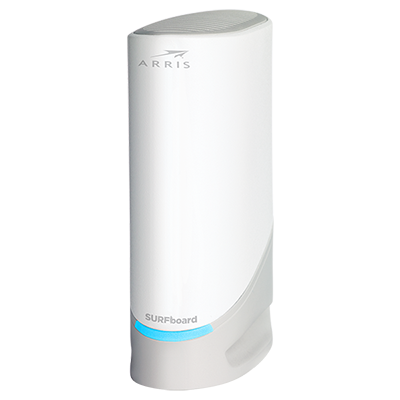
Arris S33
Imagine stepping into a world where two champions vie for the throne of the best cable modem. On one side, we have the mighty Arris S33, and on the other, the legendary Arris SB8200. Both are phenomenal in their own right, but their subtle differences make for an enthralling showdown. From size to hardware, ports, and more, these nuances shape the story of each modem’s unique appeal. Today, we’ll embark on a journey to unravel these mysteries, helping you make an enlightened choice about the perfect companion for your digital needs in 2023.
To start our journey, let’s look at a comparative snapshot of these two fierce contenders:
| Feature | Arris S33 | Arris SB8200 |
|---|---|---|
| DOCSIS Technology | DOCSIS 3.1 | DOCSIS 3.1 |
| Channels | 32 x 8 | 32 x 8 |
| Size & Weight | Slimmer, 1.5 lbs | Bulkier, 2.1 lbs |
| Price | Approx. $198 | Approx. $140 |
Armed with these facts, it’s time to delve deeper into the details. With every attribute we scrutinize, we’ll be one step closer to identifying the champion that will elevate your digital experience to new heights.
Digging Deeper: A Comparative Analysis of Arris S33 and Arris SB8200’s Hardware
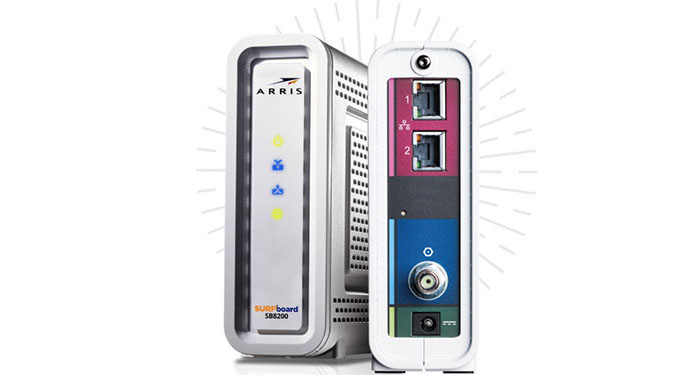
Arris SB8200
Picture this: Two seemingly identical pieces of technology sit side by side, their sleek exteriors gleaming under the showroom lights. But, as the discerning tech enthusiast knows, the devil is in the details. Let’s take a closer look at the Arris S33 and the Arris SB8200, two leading contenders in the race to enhance your digital experience.
For more similar posts like this visit our blog and real about How to Outsmart Netflix’s Password Sharing Policy and Secure Your Streaming as well as How to Return Comcast Equipment: The Ultimate Guide for Hassle-Free Returns.
The first noticeable difference is their physical presence. The S33, a slim and trim piece of technology, tips the scales at a mere 1.5 pounds. This is a stark contrast to the more substantial SB8200, which weighs in at a heftier 2.1 pounds. For those who find themselves frequently relocating their modems, the S33’s portability could be the winning factor.
But, a modem is more than just its shell. It’s the inside that counts, and in this case, the differences are even more compelling. The S33 and SB8200 diverge considerably when it comes to speed capabilities and RAM.
Imagine the thrill of a high-speed car chase. That’s the S33, with its capacity to support maximum wired speeds of up to 2.5Gbps for a single port. The SB8200, on the other hand, offers a more standard speed of 1Gbps. It’s the reliable sedan to the S33’s sporty coupe.
And then, there’s the RAM. Imagine a bustling city during rush hour: cars whizzing by, pedestrians rushing, everything moving at a frantic pace. That’s the SB8200, with its robust 3GB of RAM, designed to manage network congestion and deliver consistent speed. The S33, with 1GB RAM and an equal amount of NAND flash, is like a smaller town with less traffic but still gets you where need to go.
As we peel back the layers of these two devices, it’s clear that while they may look similar on the outside, the S33 and SB8200 each bring unique strengths to the table. So, when it comes to picking the champion that will redefine your digital journey, it’s all about identifying what matters most to you.
Up next? We’ll delve into the differences in port setup, another critical aspect of these two contenders.
Diving Deep into the Port Setup

Arris SB8200
The port setup of a modem is much like the roads leading to a city. The wider and more numerous the roads are, the more vehicles they can accommodate, translating to more data flowing in and out of your devices. Now, imagine the Arris S33 and the Arris SB8200 as two different cities with unique road infrastructures. Let’s explore this in greater detail.
The Arris S33, akin to a modern, future-ready city, has two main roads leading to it. One of these is a substantial 2.5Gbps port, a superhighway of sorts, designed to handle the big rigs of the data world. This allows it to comfortably support the data demands of bandwidth-intensive devices, such as 4K consoles and gaming stations. The second road is a 1Gbps port, a reliable route that can handle regular traffic.
In contrast, the Arris SB8200 is more like a traditional city with two 1Gbps ports. While these ports may not be as large as the 2.5Gbps port on the S33, they offer a unique advantage. The SB8200 supports link aggregation, which, in our city analogy, is like creating a temporary extra lane when traffic gets heavy. This feature can provide multi-gig speeds when using two active internet plans, keeping your data traffic flowing smoothly.
So, if your home network is bustling with high-bandwidth activities, like online gaming on 4K consoles or streaming high-definition content, the S33’s 2.5Gbps port might be the superhighway you need. However, if you’re running multiple active internet plans and want to ensure consistent data flow, the SB8200’s link aggregation could prove to be a game-changer.
Read more about: Netflix Password Sharing Fee: Demystifying the System and Its Implications
Remember, choosing the right modem is much like planning a city’s infrastructure. Every decision you make can significantly impact how smoothly data travels within your network, affecting your overall internet experience.
Evaluating the Design: Aesthetic Appeal and User Experience
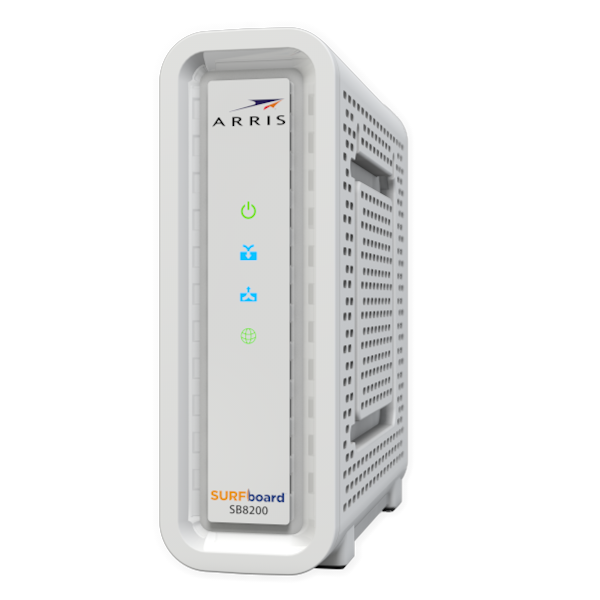
Arris SB8200
When it comes to choosing between the Arris S33 and the Arris SB8200, it’s not just about their technical specifications. The design of the modem also plays a crucial role and might swing the balance for some users. Let’s delve into this aspect to further enrich your decision-making process.
The Arris SB8200 stands out with its rectangular form, evoking a sense of solidity and reliability. Its design is reminiscent of a classic book on a shelf, a nod to its sturdy performance and steadfast reliability. The back panel comes color-coded, a small but significant feature that makes setup and troubleshooting a breeze, even for those who are not tech-savvy. Aesthetically, the SB8200’s color-coded back panel provides a burst of vibrancy, lending it an attractive edge over its competitors.
“The color-coded back panel of the SB8200 is not just pleasing to the eye; it makes the setup process more intuitive and user-friendly, reflecting a thoughtful design approach.”
In contrast, the Arris S33 takes a different design route. Its rounded edges and sleek form factor exude a modern, minimalistic appeal. This design is perfect for those who appreciate simplicity and elegance. At a mere 1.5 pounds, the S33 is lighter and more portable than its SB8200 counterpart, making it a great pick for those constantly on the move or with limited space.
From an aesthetic perspective, the choice between the S33’s minimalist chic and the SB8200’s vibrant practicality is subjective, catering to different user preferences. Both modems, however, prioritize user experience in their design, ensuring easy setup and usage. As we move on to discussing their similarities and differences in the next sections, keep in mind how their design aesthetics align with your personal style and needs.
Peeling Back the Layers: Common Ground between Arris S33 and Arris SB8200
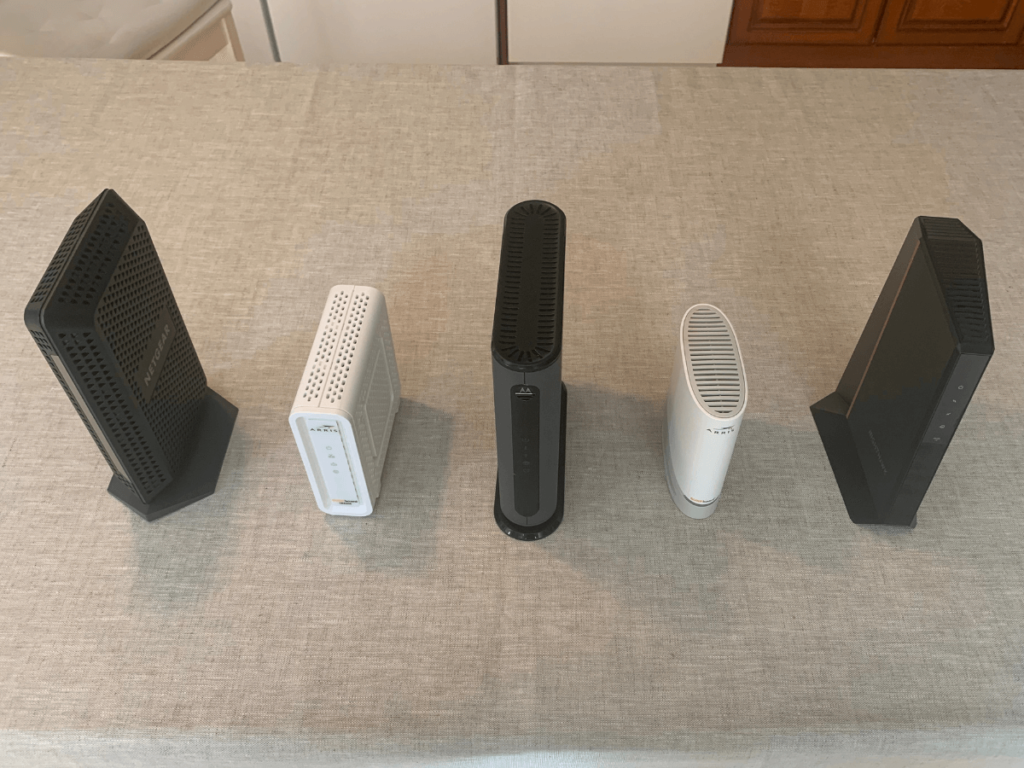
Arris S33 vs Arris SB8200
While it’s true that the Arris S33 and the Arris SB8200 have their unique strengths, it’s equally crucial to understand what they share. This mutual ground is not just about similarities; it’s a testament to their shared commitment to top-tier performance, future-readiness, and user-friendly interfaces.
Let’s dive into these shared facets, the characteristics that allow both modems to provide robust, high-quality service to their users.
Compact and Convenient
Firstly, both modems sport comparable dimensions. This characteristic may be overlooked, but it’s a significant factor for those dealing with space constraints or prefer a minimalist setup. With similar sizes, both modems can easily fit into any arrangement without eating up too much space or looking out of place.
A Future-Proof Investment
Secondly, both modems support 32×8 channel bonding for the DOCSIS 3.0 standard. This feature means they can handle multiple data streams simultaneously, ensuring high-speed internet connectivity. Coupled with support for DOCSIS 3.1 with DOCSIS 3.0 backhaul, these modems are ready for the future, capable of adapting to technological advancements and ever-growing internet demands.
Smart Technology for Seamless Connections
Another similarity lies in their support for Auto Negotiate and Auto-MDIX technologies. This capability ensures that these modems can automatically select the most optimal network speed and mode, enhancing your internet experience and eliminating the need for manual adjustments.
User-Friendly Features
When it comes to user experience, both modems include indicative LEDs for specific DOCSIS modes. This feature makes it easy for users to get a quick read on the status of their internet connection – a green light means you’re good to go!
Read more about: Is the Xfinity xFi XB6 Gateway Worth Renting in 2023? A Comprehensive Review
Moreover, each modem is equipped with at least one 1G Ethernet port. This ensures that users who prefer wired connections for stability or speed can easily hook up their devices.
Consistent Performance
Finally, the icing on the cake: both the Arris S33 and the Arris SB8200 sport a full-band digital tuner. This feature guarantees a consistent and reliable internet speed, regardless of network congestion or peak usage times.
And if you’re looking ahead, rest assured; both modems come with 2×2 OFDM/OFDMA support for the DOCSIS 3.1 standard. This means they’re geared up to handle the next generation of internet technology, marking them as solid, future-proof choices.
In the end, while the Arris S33 and the Arris SB8200 may differ in certain specific features, they share a common foundation of high-quality performance, user-friendly design, and future-readiness. This shared DNA helps them stand tall as two of the top contenders in the world of modem technology.
Diving into the Velocity: Speed and Compatibility of Arris S33 and Arris SB8200
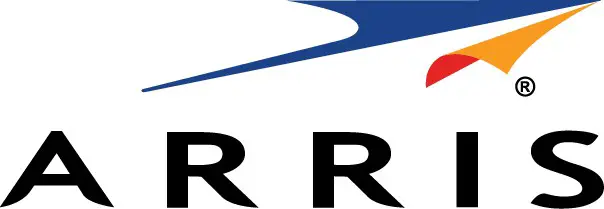
arris
Imagine you’re on a racetrack, and you’re handed the keys to two top-tier race cars. Both have impressive specs, but one can reach a slightly higher top speed. This is the scenario we’re looking at when comparing the Arris S33 and Arris SB8200 modems. The need for speed, as they say, is real, especially when it comes to your internet. But remember, it’s not just about speed; compatibility is equally crucial.
Consider the SB8200 as your sturdy racecar. According to the manufacturer, it can handle internet plans that ascend up to a whopping 2Gbps. Picture this: you’re downloading a high-definition movie while simultaneously playing an online game on your console, and there’s still room for more! I tested this modem with a 1Gbps Comcast plan, and it delivered speeds of up to 980Mbps via the wired port. It’s a beast, alright!
Read more and find out why Is Your Xfinity WiFi Constantly Disconnecting? Discover the Reasons and Solutions.
But here’s the twist. To utilize the full 2Gbps potential of the SB8200, you need another IP assigned by your ISP as a different connection, which is equivalent to having an additional pit crew in our racecar analogy. The SB8200 is like a trusted steed, compatible with a range of ISPs, including Comcast, Spectrum, Cox, and others, making it a versatile choice.
On the other side of the track, we have the Arris S33, a speed demon that can clock maximum speeds of up to 2.5Gbps. This is thanks to its dedicated multi-gig Ethernet port. While testing it with the same Comcast internet plan, I witnessed speeds peaking at 944Mbps, even during high-traffic periods. It’s like having a turbo boost at your disposal! The S33 is compatible with ISPs like Cox, Xfinity, and more, providing flexibility.
When the race to multi-gig speed begins, the S33 seems to be a better bet, especially if your ISP can offer such speeds in the future. It’s like having a racecar that’s ready to shift into the next gear when the track allows.
So, whether you’re looking for a reliable race car (the SB8200) or a speed demon (the S33), both modems provide a thrilling ride in the world of high-speed internet. Remember, your choice should be fueled not just by speed, but also by compatibility with your ISP. Stay tuned as we continue to delve deeper into the world of Arris modems in our upcoming sections.
Final Verdict: Decoding the Arris S33 vs Arris SB8200 Dilemma
In the digital age, the importance of a reliable and high-speed internet connection cannot be overstated. Whether you’re a professional working from home, a passionate gamer, or an internet-browsing enthusiast, the choice between the Arris S33 and Arris SB8200 can make a significant difference to your online experience.
Imagine you’re standing at a crossroad, with the S33 and SB8200 beckoning you from either side. Your decision is not about picking one road over the other, but about choosing the path best suited to your needs and preferences.
Let’s start with the Arris S33. Picture a sleek, portable device that’s ready for the future. The S33 is like a trusty steed, galloping at maximum speeds of up to 2.5Gbps thanks to its dedicated multi-gig Ethernet port. Its compatibility with ISPs like Cox and Xfinity make it a worthy choice. Now, envision that you’re a passionate gamer, or perhaps, you’re anticipating the launch of a multi-Gig cable internet plan from your ISP. If that’s the case, the S33, with its 2.5G port for connecting gaming consoles, is your perfect companion.
On the other hand, there’s the Arris SB8200, a device that’s steady, compatible, and reliable. It’s like a sturdy ship, sailing smoothly across the sea of internet connectivity, capable of handling internet plans up to 2Gbps. Its wide compatibility with leading ISPs such as Comcast, Spectrum, and Cox earns it a badge of versatility. If consistency across various ISPs is your priority, the SB8200 is an excellent choice.
Both the S33 and SB8200 are excellent modems that promise high-speed and reliable internet connectivity. However, just like choosing the right path at a crossroad, the decision between the two boils down to your specific needs and priorities.
Remember, the right choice will not only impact your present online experience but will also shape your future digital endeavors. So, whether it’s the Arris S33 or the Arris SB8200 that you choose, rest assured that you’re investing in a device that’s designed to meet your needs and stand the test of time.
Q: What is the maximum wired speed supported by the Arris S33 and Arris SB8200?
A: The Arris S33 supports maximum wired speeds of up to 2.5Gbps for a single port, while the Arris SB8200 offers a standard 1Gbps.
Q: Does the Arris SB8200 support link aggregation?
A: Yes, the Arris SB8200 has link aggregation support, allowing for multi-gig speeds when using two active internet plans.
Q: Which modem is more future-proof in terms of ports?
A: The Arris S33 has one 2.5Gbps port and 1Gbps port, making it more future-proof than the two 1Gbps ports on the SB8200.
Q: Which modem is more portable?
A: The Arris S33 is slimmer and weighs 1.5 pounds, making it more portable than the 2.1-pound SB8200.
